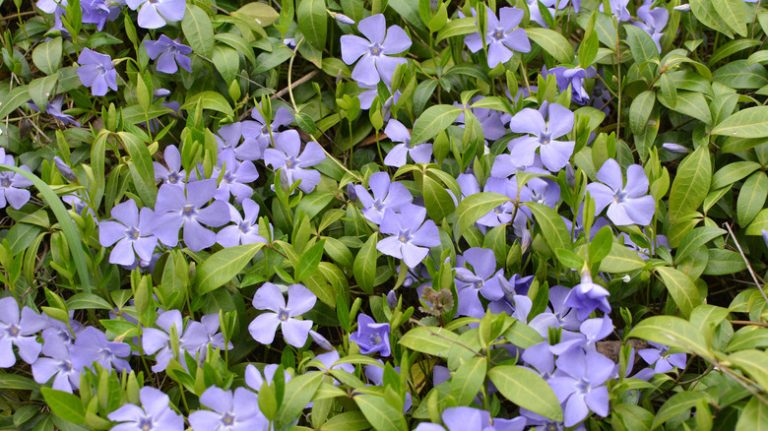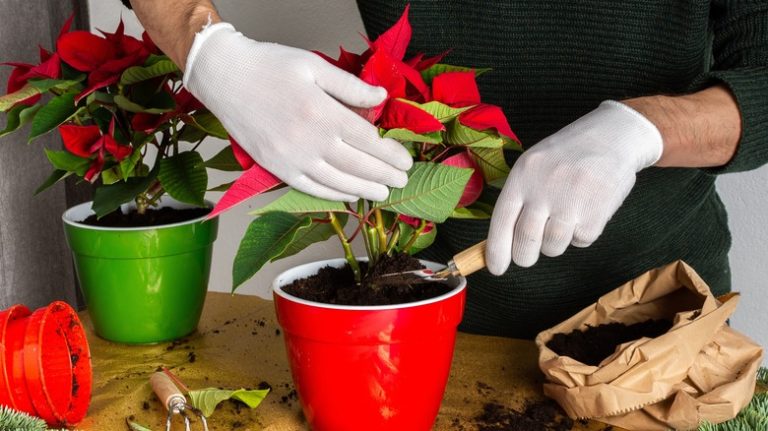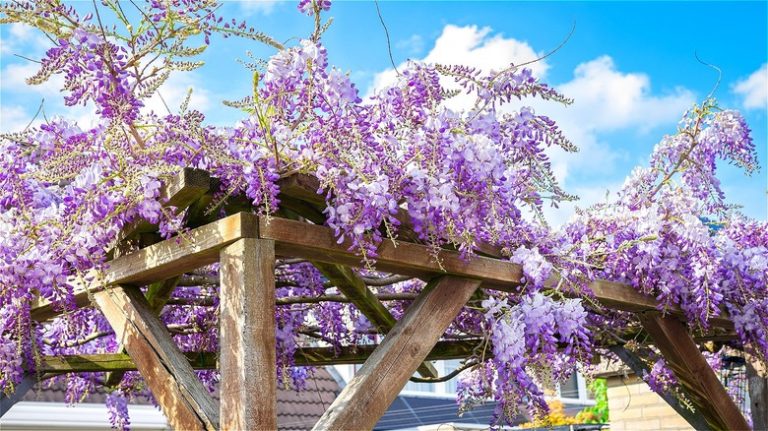Calla lilies are beautiful flowers that don’t just spread joy and beauty, but also require proper care to thrive. Whether you want to grow them indoors or outdoors, these plants will surely begin to bloom in no time if you provide them with the optimal conditions. In this guide, we will explain what you need to know about planting and caring for calla lilies to ensure they thrive in any climate.
When it comes to planting calla lilies indoors, you can start by selecting a well-draining potting soil. Once planted, make sure to position the bulbs where they will receive full sunlight for the optimal growth rate. During the wintertime, calla lilies go into a state of dormancy, so you must slide back on the watering. However, once the weather starts warming up again, you can irrigate them sparingly to help them bloom.
One must be careful when handling calla lilies, as they are poisonous to pets. So, if you have furry friends at home, it’s important to keep them away from these beautiful flowers. Additionally, calla lilies require a balanced fertilizer with a low nitrogen rate to promote healthy growth and avoid burning the above-ground parts of the plant.
As for outdoor plantings, calla lilies thrive in most climates but prefer a long growing season, usually from spring to fall. To ensure beautiful blooms, it’s important to find a location with well-draining soil, as waterlogged areas can limit their growth. The optimal temperature for calla lilies is between 60-75°F, making them a great choice for both warm and moderately cool climates.
Whether you’re a seasoned gardener or just starting out, this primer on growing calla lilies will guide you through every step of the process. From potting tips to pruning effects, we’ll provide you with all the necessary information to care for your calla lilies and keep them blooming for seasons to come.
Tip: Calla lilies are live up to their name, resembling a balloon when flowering. To redeem their full potential, it’s important to be careful when pruning them. By limiting the number of items you prune, you can allow the calla lilies to continue blooming without interruption.
How and When to Water Calla Lilies
Watering calla lilies is an important part of caring for these beautiful and elegant flowers. Proper watering will help them thrive and produce stunning blooms. Here are some tips on how and when to water your calla lilies:
- Watering frequency: Calla lilies need to be watered regularly to keep their soil moist, but not overly saturated. Aim to water them about once a week, or more frequently if the weather is particularly hot and dry.
- Watering method: When watering calla lilies, it’s best to irrigate directly at the base of the plant. Avoid overhead watering as this can lead to fungal diseases and damage the delicate flowers.
- Watering amount: The amount of water you provide will depend on the size of your calla lily and the weather conditions. Generally, aim to give them about 1 inch of water per week. Monitor the moisture level of the soil and adjust accordingly.
- Watering during dormancy: Calla lilies go through a period of dormancy in the winter. During this time, reduce watering and let the soil dry out slightly between waterings. This will help prevent fungal diseases and promote healthy growth when they start to bloom again.
- Watering indoor calla lilies: If you have calla lilies growing indoors, be sure to keep them watered consistently. The dry indoor air can cause the soil to dry out quickly, so check the moisture level frequently and water as needed.
Remember that calla lilies prefer well-draining soil, so make sure the water doesn’t sit around the roots for too long. Overwatering can lead to root rot and other issues.
In addition to proper watering, other factors like sunlight, temperature, and fertilization also play a role in the care of calla lilies. These beautiful plants are generally hardy and easy to care for, as long as you provide the right conditions. If you’re not sure about any of the care requirements, please seek more information or advice to ensure the best results for your calla lilies.
Proper Calla Lily Watering
Watering your calla lilies properly is essential to their growth and overall health. These beautiful plants thrive in a moist environment, so it’s important to follow some guidelines to ensure their well-being.
When it comes to watering calla lilies, the key is to find the right balance. You don’t want to overwater them, as this can lead to root rot and other diseases. On the other hand, underwatering can cause the plants to dry out and wilt.
Here are some tips on how to water your calla lilies:
- Water your calla lilies once a week during the growing season, and less frequently during the winter months.
- The amount of water needed will depend on factors like the temperature, humidity, and the size of the pot or planting area.
- Make sure the soil is moist but not waterlogged. Aim for a balance between dampness and dryness.
- Water your calla lilies deeply, making sure the water reaches the root system.
- If your calla lilies are planted outdoors, they may require more frequent watering, especially during hot and dry weather.
- Consider using a watering can or drip irrigation system to provide a slow and even water supply.
It’s important to keep in mind that calla lilies are sensitive to water-related issues, so it’s crucial to pay attention to their watering needs. Overwatering can lead to root rot and other diseases, while underwatering can cause the plants to dry out and wither.
Another important factor to consider is the location of your calla lilies. These plants prefer a sunny spot, but they can also tolerate partial shade. Just be sure to position them where they can get at least six hours of sunlight each day.
In summary, proper watering is crucial for the overall health and well-being of your calla lilies. Find the right balance, provide enough moisture without overdoing it, and take into account factors like temperature and humidity. By following these guidelines and giving your calla lilies the right amount of water, you can enjoy their stunning blooms year-round, whether they are planted indoors or outdoors.
A Calla Lily Primer
Calla lilies are beautiful and elegant flowers that are easy to grow and care for. Whether you want to plant them in your garden or keep them indoors in containers, these tips will help you successfully grow and enjoy calla lilies.
Calla lilies are perennials that can spread quickly if not contained. The bulbs are usually sold in packaging that includes instructions on how to plant them. Callas need to be planted somewhere with well-drained soil and they prefer full or partial sun.
Calla lilies are able to bloom for most of the year, although they may go through a period of dormancy during winter. To encourage blooming, provide regular watering and keep the soil moist-know that they don’t like to be watered too much, as it can lead to root rot. Calla lilies need a wide range of temperature to thrive, so they can live in both hot and cool climates.
When planting calla lilies, make sure to choose a location with enough space for them to grow. They can reach a size of 2-3 feet tall and spread out about 18 inches wide. The bulbs should be planted at a depth of about 2 inches in the soil.
Calla lilies can be grown in the ground or in containers. If planting in containers, make sure to use well-draining potting soil and ensure that the containers have drainage holes. Callas can be grown indoors year-round or moved outdoors once the weather warms up.
Calla lilies have specific care needs. They like to be in a spot that receives bright but indirect sunlight. The soil should be kept moist but not overly wet. Fertilizer can be applied once a month during the growing season to promote healthy growth and beautiful blooms.
Calla lilies are pretty low-maintenance plants. They don’t require much pruning apart from removing any dead or damaged leaves. In terms of pests and diseases, callas are generally not too bothered. However, they can be susceptible to Aphids, Spider Mites, and Botrytis. Regular inspection and pest control may be required.
Calla lilies make wonderful gifts, whether as potted plants or cut flowers. They are perfect for special occasions like weddings or anniversaries. It’s worth mentioning that although calla lilies are beautiful and long-lasting, all parts of the plant are poisonous and should be kept away from children and pets.
In conclusion, calla lilies are versatile and rewarding plants to grow. With proper care and attention to their specific needs, you can enjoy their elegant beauty in your garden or indoors for years to come.
When and How to Irrigate
Irrigation is an essential component of caring for calla lilies, as it ensures that the plants receive adequate moisture to support their growth and flowering. The timing and method of irrigation depend on various factors, including the temperature, humidity, and moisture needs of the plants.
If you are growing calla lilies outdoors in an in-ground setting, you should water them regularly when the top inch of soil feels dry to the touch. However, be careful not to overwater them, as excessive moisture can lead to root rot and other diseases. Additionally, calla lilies should be watered more frequently during periods of high temperature or when the weather is particularly dry.
When it comes to indoor calla lilies, you should water them sparingly while they are in dormancy or not actively blooming. During this period, it is best to water the plants only when the soil feels dry, but be careful not to let the soil completely dry out. On the other hand, when calla lilies are actively growing and blooming, they require more frequent watering. You should water them thoroughly, allowing the excess water to drain out of the pot to avoid waterlogging.
When irrigating calla lilies, it is important to use the right amount of water and avoid wetting the leaves and flowers. Watering the plants at the base, near the soil, will help prevent diseases and fungal issues. The water should be applied slowly and evenly, ensuring that the entire root zone gets moistened.
Furthermore, the calla lily bulbs are quite thirsty and need higher irrigation rates compared to established plants. The moisture needs can vary based on the environment and the growth rate of the plant, so it is crucial to monitor the moisture level regularly.
One way to check the moisture level in the soil is by inserting your finger about an inch deep into the soil. If it feels moist, you can wait a bit longer for the next watering, but if it feels dry, it is time to water the calla lilies.
By providing the proper irrigation, you can ensure that your calla lilies thrive and produce beautiful blooms. Just remember to adjust the watering schedule based on the specific needs of your plants and the environmental conditions.



